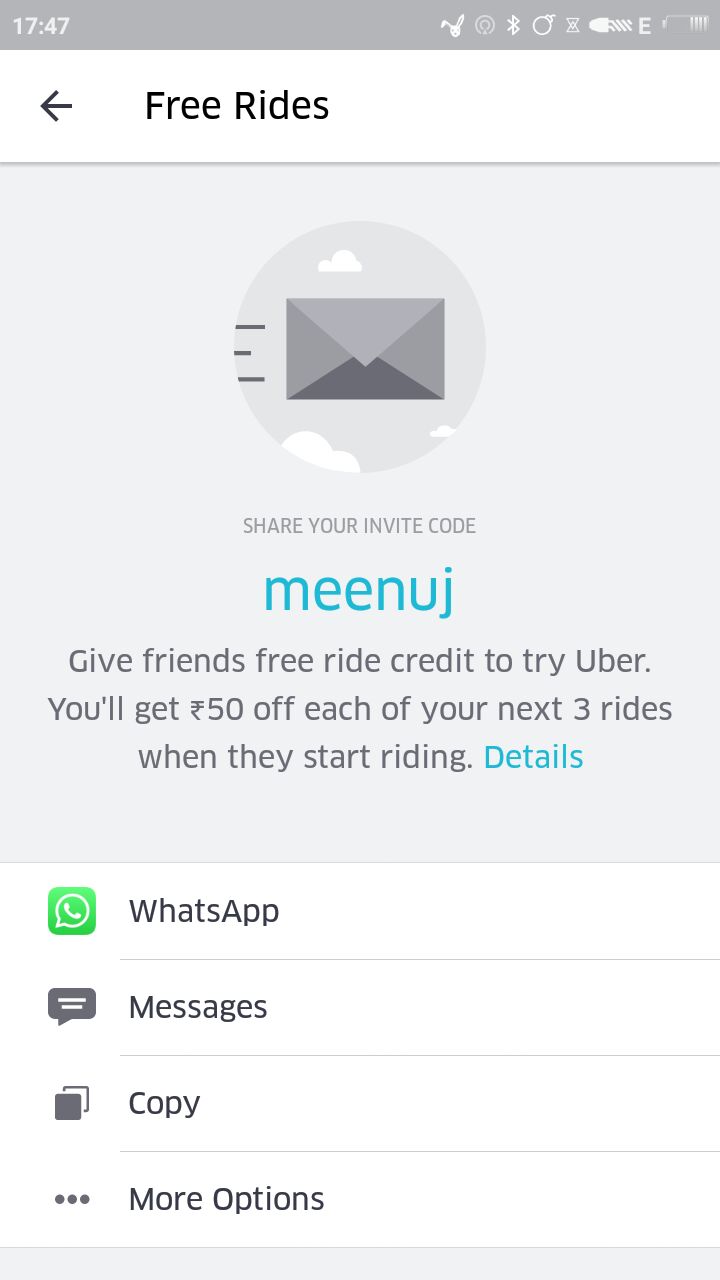While we all are so busy trying to figure out ways to get more leads and customers, most of us neglect one very important point – how to increase revenue from existing customers. Guilty of this? Then this webinar is just for you!
 Saurabh Dayal, the Growth Head at Knowlarity Cloud Telephony, talks about 7 ways in which we can get more sales from existing customers. Saurabh founded Expand Brand and Print Express in 2011, both of which help retailers drive better customer engagement & brand awareness. With over 10 years experience in business management, operations & sales, Saurabh has delivered measurable outcomes while working with start-ups & high-performance organisations like IBM.
Saurabh Dayal, the Growth Head at Knowlarity Cloud Telephony, talks about 7 ways in which we can get more sales from existing customers. Saurabh founded Expand Brand and Print Express in 2011, both of which help retailers drive better customer engagement & brand awareness. With over 10 years experience in business management, operations & sales, Saurabh has delivered measurable outcomes while working with start-ups & high-performance organisations like IBM.
In case you missed it, you can watch the recording right here:

Here are the questions that came in during the webinar, in case you have similar doubts. :)
Q1. What is the difference between up selling and cross selling?
Let me explain this with an example. If a customer buying a product worth Rs.1000, is sold another product worth the same amount, then it would be cross-sell. But, if a customer is sold a product that is worth say, Rs.2000, then that would be an up-sell. Basically, migrating a customer to a service within the same level is cross sell, and giving him additional features outside of what he has bought is up-sell.
Q2. How do we better engage clients so that they would be willing to sign on multiple projects with us?
The first thing that needs to be identified is whether you are speaking to the right person in the organization. By right person, I mean the person who has the access to multiple projects and the authority to hand them over to your business. If the answer is no, then you need to identify the right person.
The second aspect is the timeliness of delivery. The customer should have faith that your organization is large enough and has the resources to handle multiple projects without making any errors. Most of the time the customers do not give parallel projects because customers doubt the capability of the organization in handling parallel projects.
One way to alleviate this fear would be to give a complimentary sample of a project that you know the client has, but has not yet handed to you.
Q3. How do we get the most out of chat, when people come only to get their queries answered, and we don’t really know the product they are looking for?
When it comes to chat, you can use a chat provider where you can easily classify the queries that come in. So it tells you whether it was a chat related to support or sales as well as what the customer was looking for. This allows the person who is responding to phrase his answers better.
Later, you can send over a ‘Thank you email’ asking if the issue was resolved. Depending on the response, you can assign them a score and get someone to contact them either through the phone or any other means.
Q4. Should we engage the interests of the end-user of the client or the benefits of the client directly?
In Knowlarity, there are customers where the decision maker or client is the owner of an SMB, while the user is the employee. It is always important to engage both. To the client, you should communicate the imminent benefits that he will get and the user should be communicated on how the product can make his life easier.
A lot of customers in Knowlarity are real estate businesses. They have a huge advertising spend in terms of hoardings or TV and radio ads. We give them a phone number to display on their ads, and track their process. The person who gives us the authorization is the owner. But the calls are being monitored by the Sales Head. So while communicating to the owner we talk about the visibility of the system and to the Sales Head about improvement of sales. So your communication should vary based on who you want to interact with. But you should interact with both.
E-commerce
Q5. How to engage with customers in retail and e-commerce (for a garment business)?
Retail is a business of channel. The three major aspects of retail are:
- Margin
- Product Pull
- Brand Recall
For an e-commerce business that is channel specific, location specific and season specific, these are very important things to look for. You need to ensure that the margins are right, the placement is right and recall is high.
Every e-commerce website has a different way of positioning garments. Be in constant touch with e-commerce players in terms of negotiating, but don’t undermine the product for placement.
Q6. How does an e-commerce company measure customer experience, where he is only a service provider and the product provider is someone else?
There are different tools to measure services. An e-commerce company is basically a marketplace. They need to look at customer effort score. This is a tool which would tell us how much effort a customer had to take to buy a particular product through the website. There are different scores a company can use depending on which type of industry they are in.
Real Estate
Q7. As the real estate market is down, how do we get existing customers to bring in referral customers?
We need to understand first why the real estate market is down.
A market goes down due to the simple rule of economics – mismatch of demand and supply. A lot more supply than demand. Though the demand is there, it comes from people who have trust in their realtors. The key point here is to work on building trust. Look at all the customers to whom you have sold and personalize your relationship with them. Run an NPS (Net Promoter Score) with the existing customer base. This would give you an idea of how likely a customer is to refer the company or product to other people. Depending on the score, target them. They will give you referrals, if you give them enough reason to do so.
Q8. Being a property consultant, what specific points should we talk about with the customer?
There are two types of people who buy property: investors and consumers. Know the need of the person. If the person is an investor, talk about how it will be a good investment, and how he can get money. If the customer is a consumer who will be living in the property, talk about the facilities of the property. Profiling becomes the key here, irrespective of whether he is a new or existing customer.
Bonus: Learn more about real estate marketing here.
Financial Services
Q9. How to engage customers in financial services sector?
It has to be through a life-jacket. Because predominantly finance deals with hard earned money and customers have to trust a person and put a face to a name before making a decision. Keep the customers updated on the comparisons in the market. If you are selling insurance, keep sending whatever information or comparison charts will help improve his asset portfolio. Financial services are very personalized and hence it has to have a personal touch.
Q10. We are a CA firm and wish to engage our customers to recommend or refer us. How do we automate this reference process?
You can use a variety of tools that are available in the market, like Promoto, which will help you capture the NPS of your clients. The next step is get these people to refer. Uber, for example, sends its customers referral codes and coupons online.

You can mimic this and link your business with social media engines and track new users. This will automate the process to a certain extent. Again, there is no right or wrong way to do this and you just have to figure out what works for you.
Bonus: Read more about Financial Services Marketing here.
Education
Q11. In the education sector, are there any tangible touch points to measure as yardsticks of performance?
One important way is to continuously monitor the scores like CSAT (Customer Satisfaction) scores, CES (Customer Effort Scores) and NPS and these become the yardsticks of how satisfied or dissatisfied the customer is with the product. We have to continuously leverage our tools based on which stage we are at.
Q11. While dealing with a preschool business, where the consumer is not the buyer, what sales strategies do we use to improve the business?
Here, the consumer is the child, though the decision maker would be the parents. The parents would start noticing behavior changes in the child, like improved confidence and gaining new knowledge. These are the parameters on which the satisfaction index is based on. These two observation will help in bringing in more referrals.
Q12. In terms of pre-sales for the preschool, how can we improve our sales techniques?
This has more to do with acquiring new customers than getting the maximum out of existing customers. For new customers, the first and foremost thing is communicating to the target audience about your service. You will have to tweak the product based on your locality. Additionally, you can do promotional activities such as sending out flyers or hoardings. But in this case, the most prevalent strategy is through word of mouth. Use alumni to get you referrals and capitalize on them as they are both the cheapest and fastest means to get new clients for your business.
Q13. In the education industry, how to increase revenue from existing customers?
It depends on if you want to expand your product base. Up-selling or cross-selling only happens when you have a product that the customer is not buying. For a school, a child can bring food from home or can be sold food from the cafeteria, or a bus service, or extra-curricular activities. Education businesses used these products to get more out of the child.








